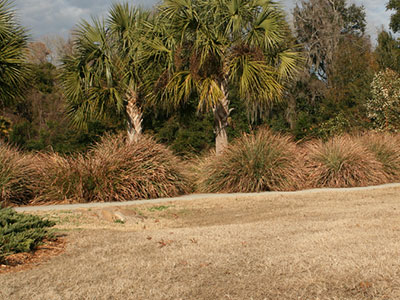Cold Damage to Turf

Seeing your lawn turn brown during the winter can be worrying for some homeowners; however, this is a normal part of your lawn’s winter dormancy. Come spring time your lawn should rebound and begin producing new green growth.
But when hard freezes hit, your turfgrass may be injured. If temperatures suddenly fall below 20 degrees Fahrenheit, your lawn may be permanently damaged. The grass may initially appear wilted, and then turn to a whiteish or brown color. It may mat to the ground and smell putrid.
Excess foot and vehicle traffic may worsen the effects of cold damage, so stay off damaged turf until the soil and plants have completely thawed.
Give your lawn some time to recover before mowing. When you do mow, be sure to cut the grass to the highest recommended height for your specific type. Cutting the grass too short could make it harder for your lawn to recover from cold weather damage.
For homeowners who want to know about the health of their grass without waiting until spring, planting small plugs of grass from your lawn in a pot can help you determine if your grass is simply dormant or truly damaged. To do this, cut small plugs of the grass with the roots still attached from your lawn and plant them in a pot. Place the pot in a warm spot that will receive sunlight and see if the grass begins to grow.
If your lawn does not recover in the spring, you may have to replace some of the grass with sod pieces or plugs. Just remember, brown grass doesn’t necessarily mean dead grass.
UF/IFAS Blogs
- Freeze Damage to My Lawn: Is It Dead? UF/IFAS Extension Sumter County
- Psychedelic Grass: It’s Not What You Think–UF/IFAS Extension Orange County
